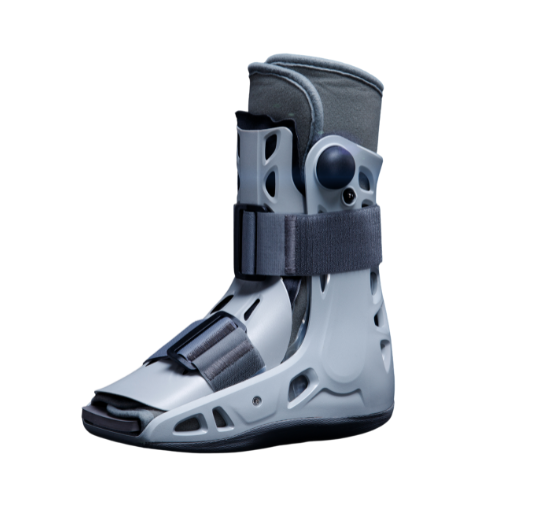
WHAT IS BRACING?
Orthopedic bracing refers to the use of devices, such as braces or supports, to provide stability, support, and protection to the musculoskeletal system. These braces are typically made from various materials, such as plastic, metal, or fabric, and are designed to immobilize or limit the movement of a specific body part to aid in injury recovery or manage chronic conditions.
WHAT YOU NEED TO KNOW:
Orthopedic braces are commonly used for a variety of purposes, including:
Injury rehabilitation: Braces are often used following orthopedic injuries, such as fractures, sprains, or ligament tears, to provide support and immobilization. For example, a cast or splint is a form of orthopedic bracing used to stabilize and protect broken bones.
Joint stabilization: Braces can help stabilize and support joints affected by conditions such as arthritis or ligament laxity. They can help alleviate pain, reduce inflammation, and improve joint function.
Postoperative recovery: After certain orthopedic surgeries, braces may be prescribed to limit joint movement, protect surgical repairs, and facilitate healing. Common examples include knee braces after knee ligament reconstruction or back braces after spinal surgeries.
Corrective purposes: Orthopedic braces are sometimes used to correct abnormal alignment or posture. For instance, scoliosis braces are employed to prevent the progression of spinal curvature in individuals with scoliosis.
Sports and injury prevention: Athletes may wear specialized braces during sports activities to protect vulnerable joints, such as ankles, knees, or wrists, from injuries. These braces are designed to provide stability while allowing a certain degree of movement.


Spine BRACING?
A spine surgery brace, also known as a spinal orthosis or back brace, is a specialized orthopedic device used to support and stabilize the spine following spinal surgery or to manage certain spinal conditions. These braces are designed to limit motion, provide support, and promote proper alignment during the healing process.
Spine surgery braces are commonly used for the following purposes:
- Postoperative support: After spinal surgery, such as spinal fusion or laminectomy, a brace may be prescribed to provide stability and limit movement in the spine. This helps protect the surgical site, promote healing, and reduce the risk of complications.
- Spinal deformity management: In cases of spinal deformities like scoliosis or kyphosis, braces can be used to help correct or manage the curvature of the spine. These braces are typically custom-made to apply pressure and support the spine in a specific position, helping to slow down the progression of the deformity, particularly in growing children and adolescents.
- Spinal instability or fracture management: In instances where there is instability or fractures in the spine, braces can be utilized to immobilize and support the affected area. This helps to relieve pain, prevent further damage, and facilitate healing.
- Degenerative spine conditions: Bracing may also be employed to manage degenerative conditions of the spine, such as spinal stenosis or spondylolisthesis. These braces can provide support, help reduce pain, and improve mobility by stabilizing the affected spinal segments.
It’s important to note that spine surgery braces are typically prescribed and fitted by a healthcare professional, such as an orthopedic surgeon or orthotist, who will consider the specific needs of the individual. They will assess factors such as the type and location of the spinal condition or surgery, the individual’s anatomy, and functional goals to determine the appropriate type and fit of the brace. Proper usage, instructions, and follow-up care are essential for achieving the desired outcomes and ensuring the individual’s comfort and safety

